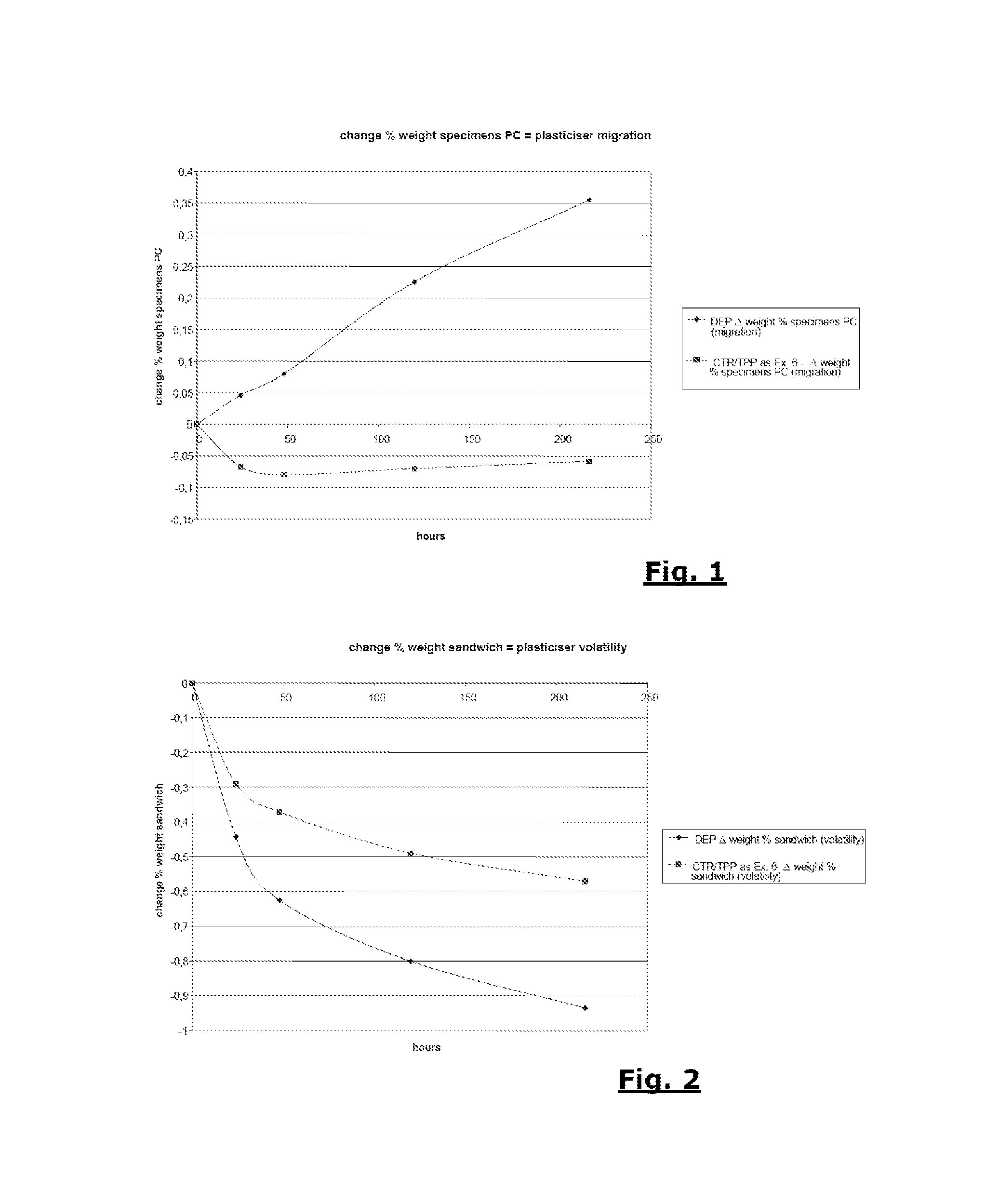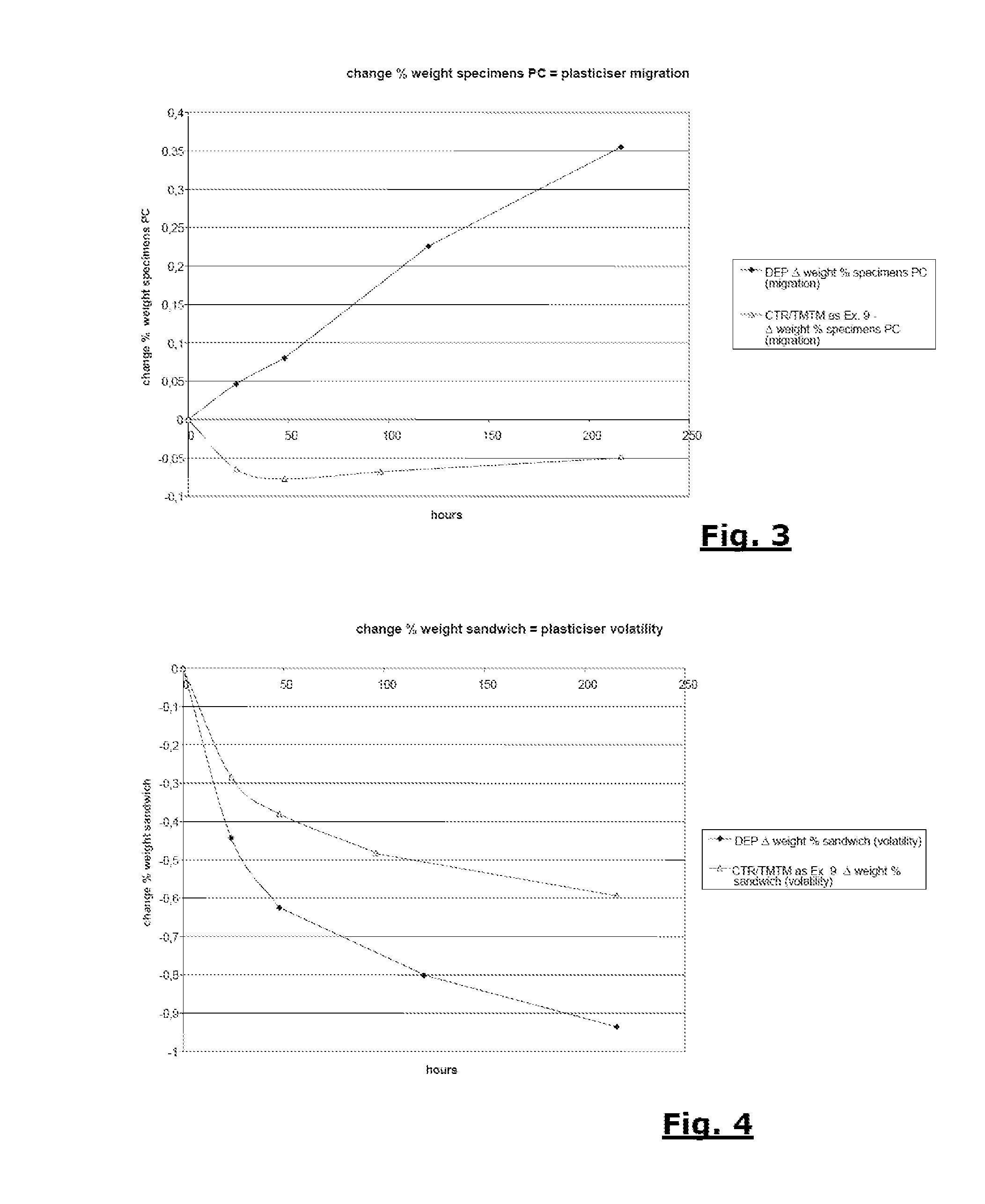Material based on cellulose acetate with plasticisers and manufactured article produced therewith
a technology of cellulose acetate and plasticisers, which is applied in the direction of instruments, applications, coatings, etc., can solve the problems of unusable in some applications, inability to use industrially, and affect the mechanical properties of finished products, and achieve the effect of comparing costs
- Summary
- Abstract
- Description
- Claims
- Application Information
AI Technical Summary
Benefits of technology
Problems solved by technology
Method used
Image
Examples
example 1
Laboratory Test No. 32, Corresponding to the 65 / 35 CTR / TPP Composition, and 28% Degree of Plasticisation
[0036]In a laboratory mixer 2160 g powdered cellulose acetate with a 39.8% degree of acetylation were mixed with 546 g acetyl triethyl citrate (CTR) and 294 g triphenyl phosphate. The material was brought up to 60° C. and mixed in the mixer for 3 hours. After cooling at room temperature the mixture was in the form of a free-flowing powder and was passed through a hopper into a single-screw extruder. The jacket of the extruder was heated to approx. 210° C. and had a die with 2-mm diameter holes at the head. The melted material in the extruder cylinder was expelled from the die at the extruder head in the form of yarns that were cut into pellets approximately 2 mm long.
example 2
Laboratory Test No. 4, Corresponding to the 68 / 32 CTR / TPP Composition, and 28% Degree of Plasticisation
[0037]Example no. 1 was repeated with the same procedures, but the following quantities of materials were used: 2160 g powdered cellulose acetate with a 39.8% degree of acetylation, 570 g acetyl triethyl citrate and 270 g triphenyl phosphate.
example 3
Laboratory Test No. 53, Corresponding to the 65 / 35 CTR / TPP Composition, and 31% Degree of Plasticisation
[0038]Example No. 1 was repeated with the same procedures, but the following quantities of materials were used: 2070 g powdered cellulose acetate with a 39.8% degree of acetylation, 604.5 g acetyl triethyl citrate and 325.5 g triphenyl phosphate.
PUM
| Property | Measurement | Unit |
|---|---|---|
| Time | aaaaa | aaaaa |
| Percent by mass | aaaaa | aaaaa |
| Percent by mass | aaaaa | aaaaa |
Abstract
Description
Claims
Application Information
 Login to View More
Login to View More - R&D
- Intellectual Property
- Life Sciences
- Materials
- Tech Scout
- Unparalleled Data Quality
- Higher Quality Content
- 60% Fewer Hallucinations
Browse by: Latest US Patents, China's latest patents, Technical Efficacy Thesaurus, Application Domain, Technology Topic, Popular Technical Reports.
© 2025 PatSnap. All rights reserved.Legal|Privacy policy|Modern Slavery Act Transparency Statement|Sitemap|About US| Contact US: help@patsnap.com


